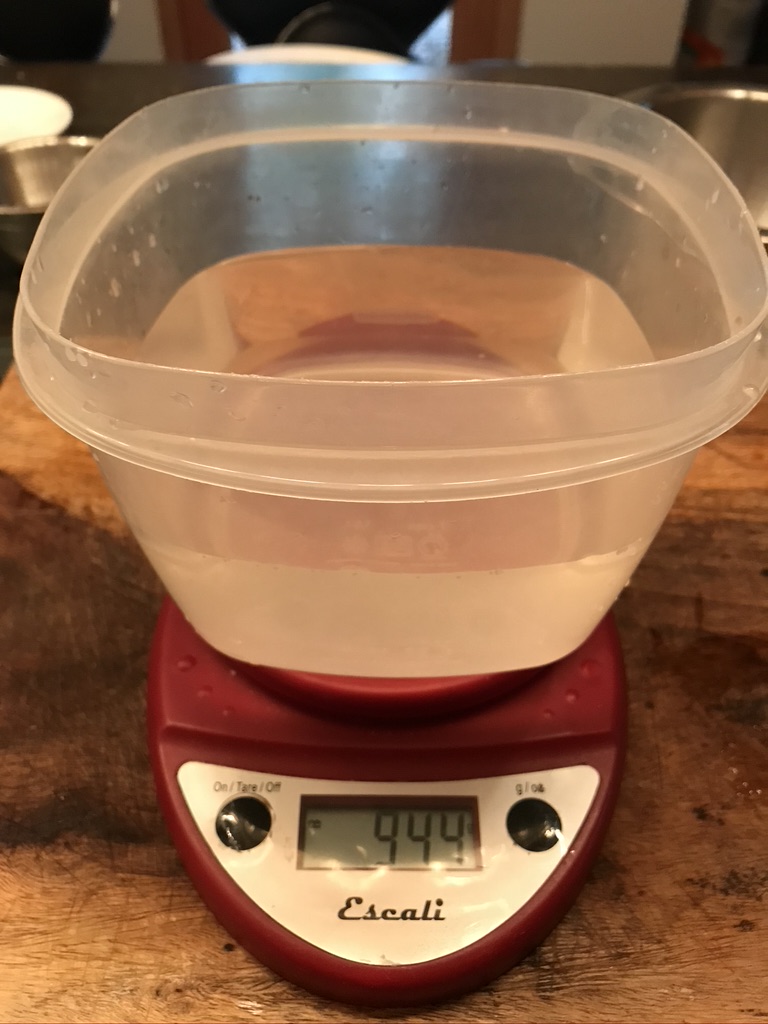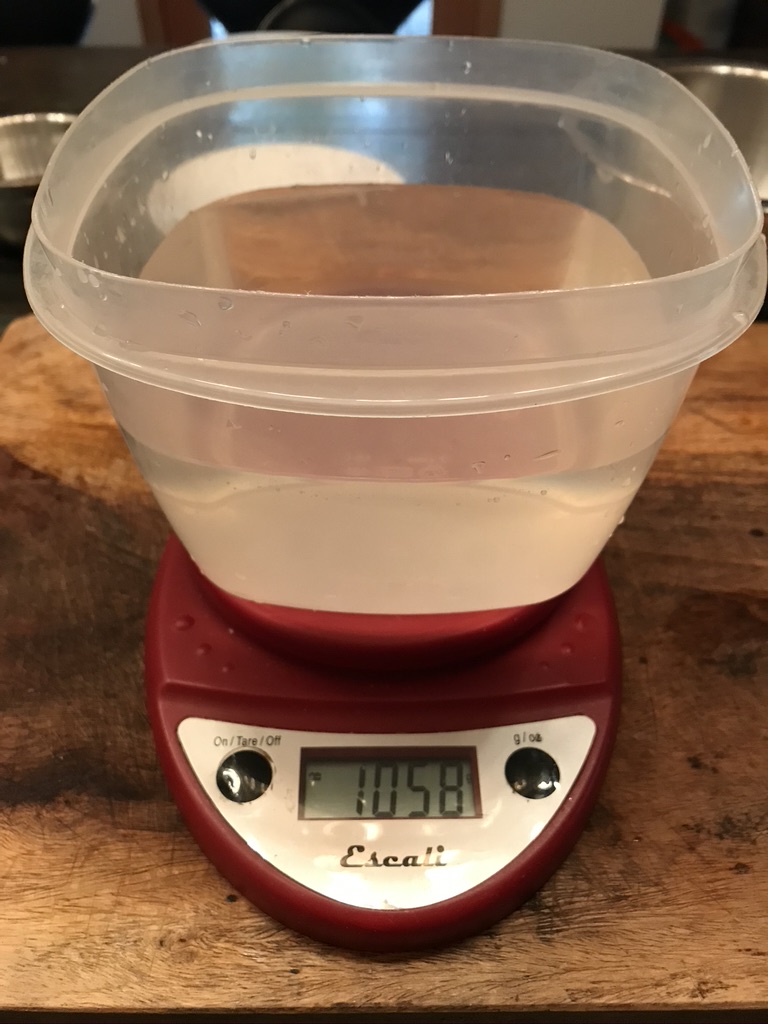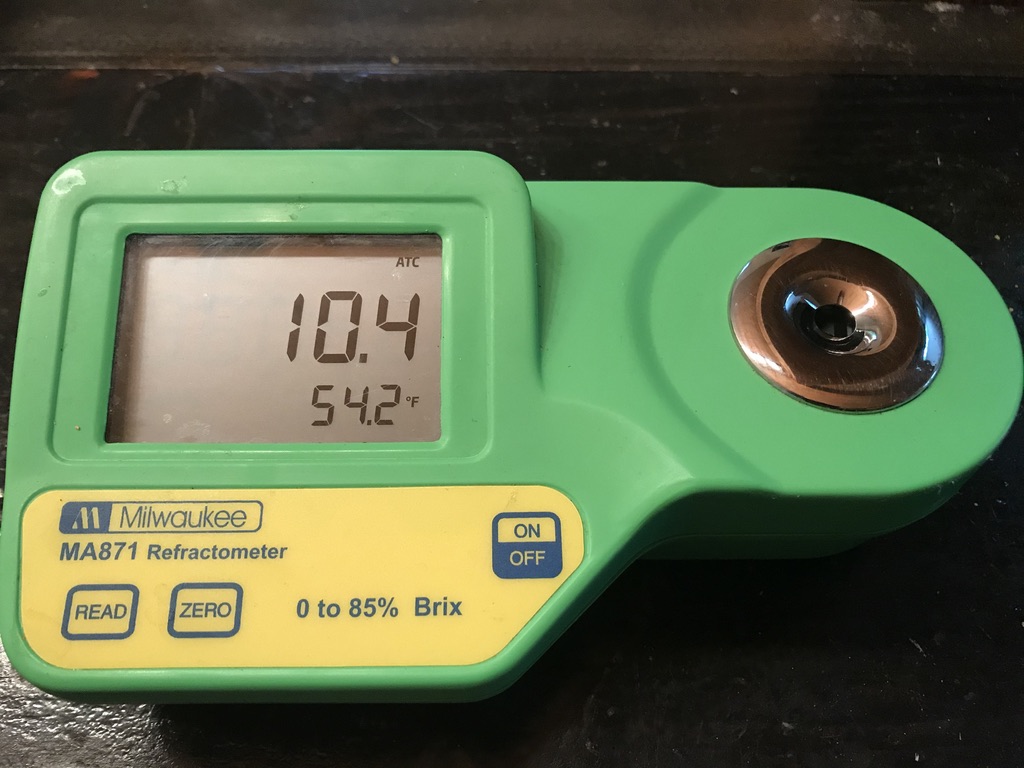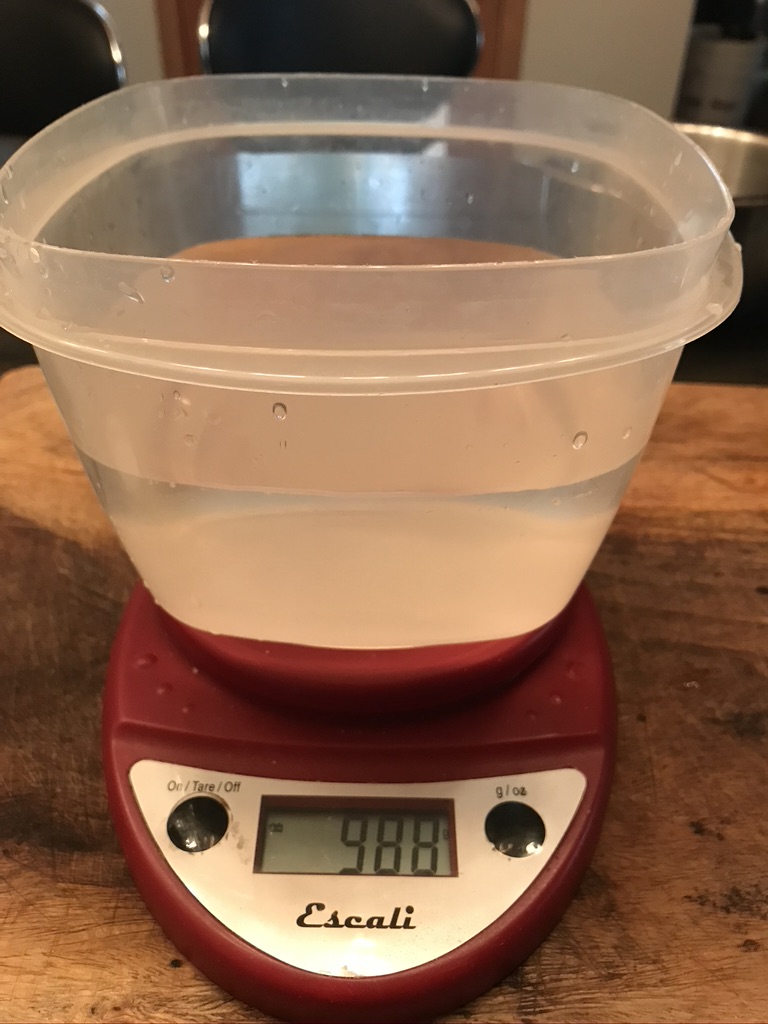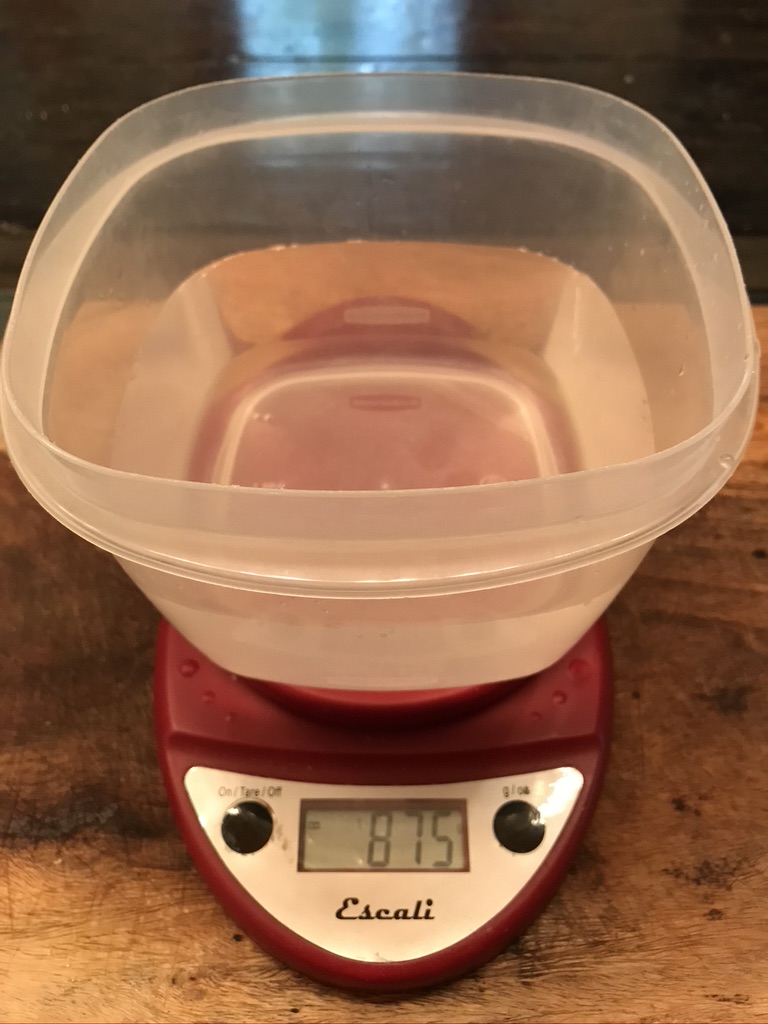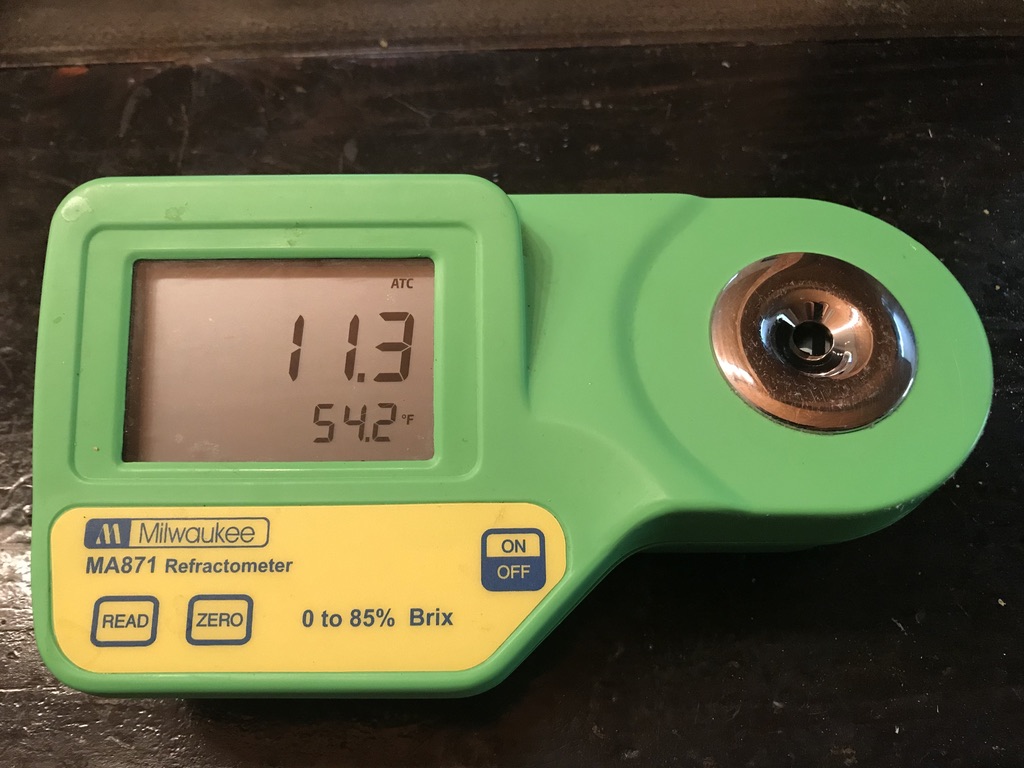Conversion efficiency is a measure of how much of the available sugars and dextrin are extracted from the grain by the mashing process. It is a simple metric as it is independent of any brew house parameters. The only variables that matter are the weight of the grain, the weighted average potential, the amount of water used and the gravity measurement.
Conversion efficiency is simply the ratio of of measured gravity points per pounds per gallon (ppg), or degrees Plato, to maximum possible ppg (or degrees Plato). The question then is how do we calculate the maximum possible ppg a grain bill can yield.
Grain Potential
In “How to Brew”, while describing grain potential, John Palmer states:
One pound of sugar will yield a specific gravity of 1.046 when dissolved in 1 gallon of water.
John Palmer, How To Brew
This, it turns out, is incorrect and has been the source of many a headache. I know, I know, who am I to correct Palmer?? Take a look at this long thread where the intricacies behind the above statement are unpacked.
The correct definition is rather that one pound of sugar will produce 1 gallon of wort with specific gravity of 1.046. A gallon of wort is not equal to a gallon of water, because the dissolved sugar occupy a certain volume. In other words, if we dissolve 1 lbs of sugar in 1 gallon of water, we will not measure a specific gravity of 1.046. If we dissolve 1 lbs of sugar in whatever amount of water will yield 1 gallon of wort, we will indeed measure a specific gravity of 1.046.
Doing the Math
One can demonstrate this mathematically. Degrees Plato are used to quantify the concentration of sugar in water as a weight percentage.
1 gallon of water weighs 8.3304 lbs, and thus the gravity of 1 lbs of sugar dissolved in 1 gallon of water is
Using just about any table or online calculator, the SG equivalent of 10.71 deg Plato is 1.043, not 1.046.
We can approximate how much water we need to produce a gallon of wort by using the density of sugar, which is 1.59 g/cm^3 or 13.16 lbs/gallon. One pound of sugar should thus occupy a volume of 1/13.16=0.076 gallons. Therefore the amount of water needed would be 1-0.076=0.924 gallons.
Using about 0.924 gallons of water will yield a gallon of wort with gravity given by
This corresponds to an SG of 1.0463. Thus the potential of sugar of approximately 46 gravity pts/lbs/gallon is necessarily defined as per gallon of wort and not per gallon of water.
Experiment
Let’s do a kitchen counter experiment to demonstrate this. Scaling things down, let’s dissolve 4oz of sugar in 1qt of water and compare it to dissolving 4oz of sugar in 0.926 quarts of water. Measuring everything by weight, the relevant values are captured in the following table.
| 1 qart water | 1 quart of wort | |
| water vol (gallons) | 0.250 | 0.231 |
| water weight (lbs) | 2.083 (945g) | 1.928 (875g) |
| sugar weight (lbs) | 0.250 (113g) | 0.250 (113g) |
| wort weight (lbs) | 2.333 (1058g) | 2.178 (988g) |
| plato | 10.718 | 11.477 |
| SG | 1.043 | 1.046 |
| wort vol | 0.268 | 0.250 |
because my scale has better display precision in grams, I converted everything to grams.

1 qt of water 
>1 qt of solution 
10.4 % Brix = 1.040 
<1 qt of water 
1 qt of solution 
11.3 % Brix = 1.044
Small measurement and instrument errors not whistanding, we can see that 1 quart of solution is closer to the target 1.046 specific gravity than 1 quart of water, confirming the math shown above.
So what… ?
This may not seem important, but if you are, like me, the kind of brewer that likes to understand and hit targets on brew day, then it is less trivial than it seems. Popular efficiency calculator online make this mistake. For example, here is a screenshot from Brewer’s Friend efficiency calculator.
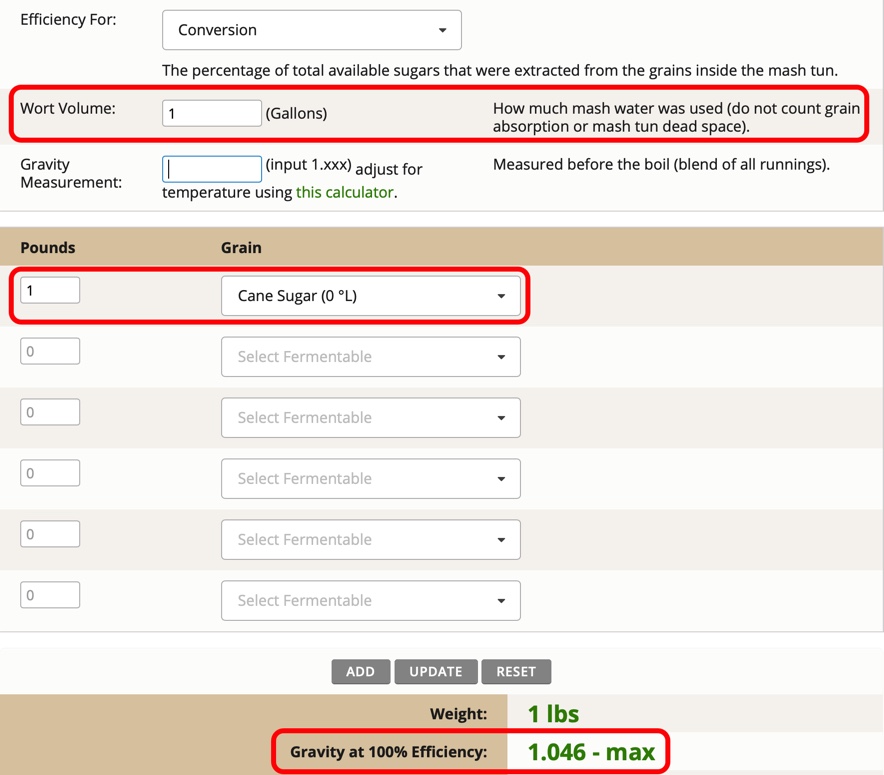
While the form does say “Wort Volume”, the description given is “How much water was used. This is a reasonable request, given that brewers will know the volume of water they used, but not the volume of wort was produced. And so the answer is wrong. The calculator should have used the plato formula and calculated the weight of water and given an answer of 1.043.
When entering a grain bill and expecting an efficiency from the calculator, the resulting efficiency will be substantially undershot.
Let’s run some more interesting numbers. Say we dissolve 12 lbs of pilsner malt with an 80% potential into 8 gallons of water. The plato formula will return the following gravity.
This corresponds 1.051 SG. What does the online calculator yield?
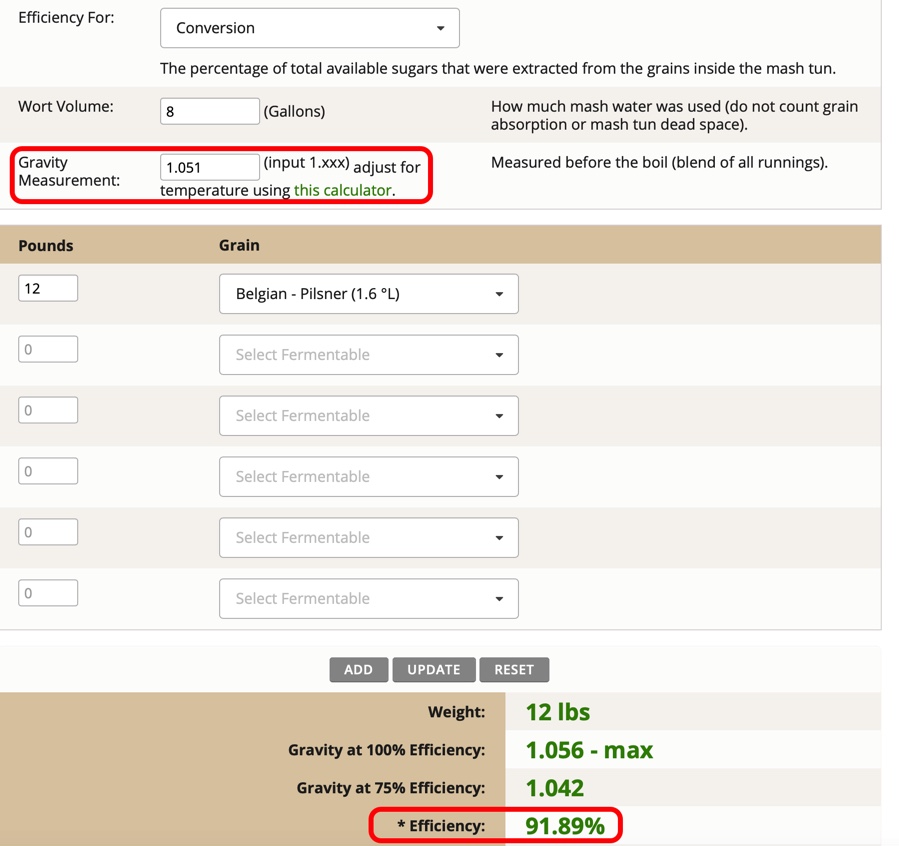
We are told our conversion efficiency is under 92%, when in reality it is 100%. 8% is a significant error and it will impact the ending brewer’s efficiency and thus recipe design, OG, FG, ABV etc…
Note that if we account for the added sugar volume, the calculator is correct. Once again we multiply the sugar weight with the density of sugar to get the added volume
Using 8.73 gallons in the calculator, we get the expected 100% conversion efficiency. We can be fairly certain that the wort vs water is the mistake made by the calculator
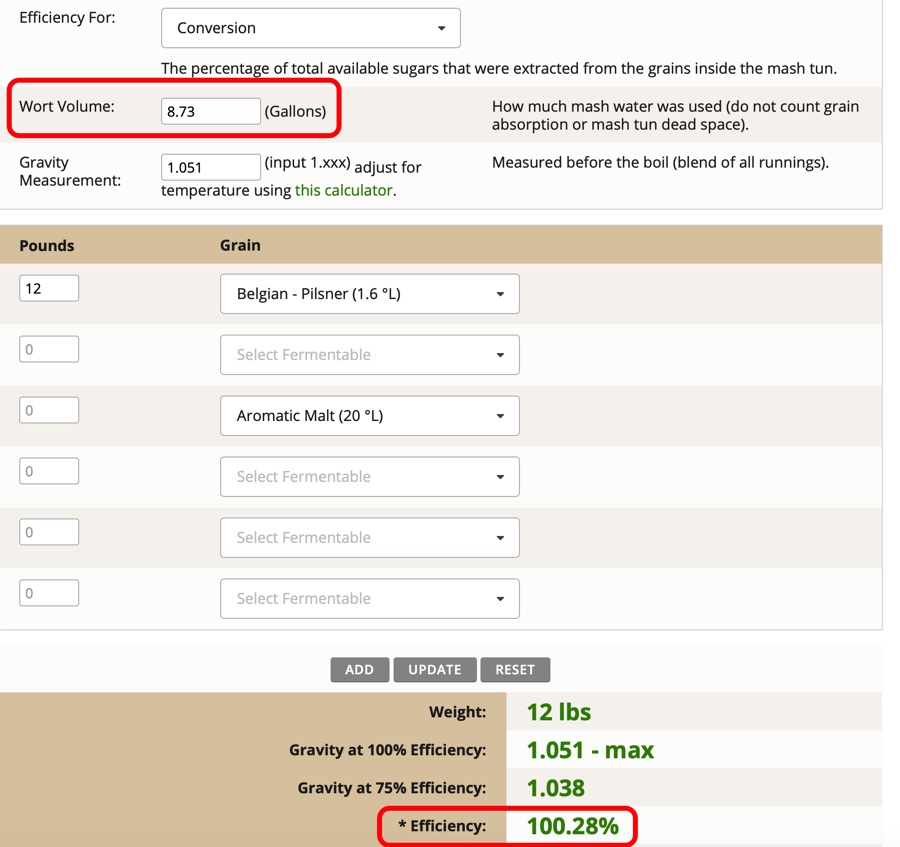
Grain Moisture
We kept the above simple, but there are other variables in play, that puts Brewer’s friend calculator even further from an accurate result. Grain is not 100% dry and grain spec sheets will typically quote a grain moisture content of around 4%. This means that 4% of the grain is water. It once again may not look significant, but the small number is deceptive.
Compounded by the water volume mistake described above, the end result is severely lower than expected.
If 4% of the grain is water, then only 96% of it contributes to sugar extraction and the maximum possible gravity is:
This corresponds to a gravity of 1.049. Let’s pause and think about what this means for the brewer entering numbers into an online calculator. He may have worked very hard to get a great mash going and extracted every last bit of sugar available, only to be told that his conversion efficiency was 88%!
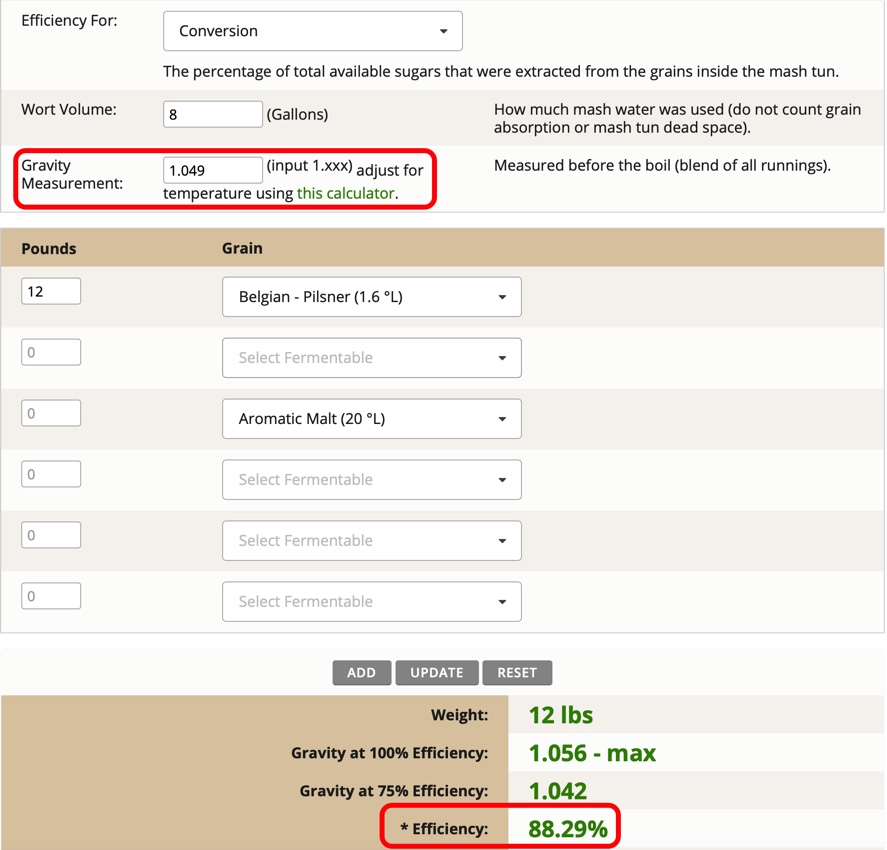
Again, if we fake out the calculator by entering the correct wort volume AND the weight of the dry grain, we get the correct results:
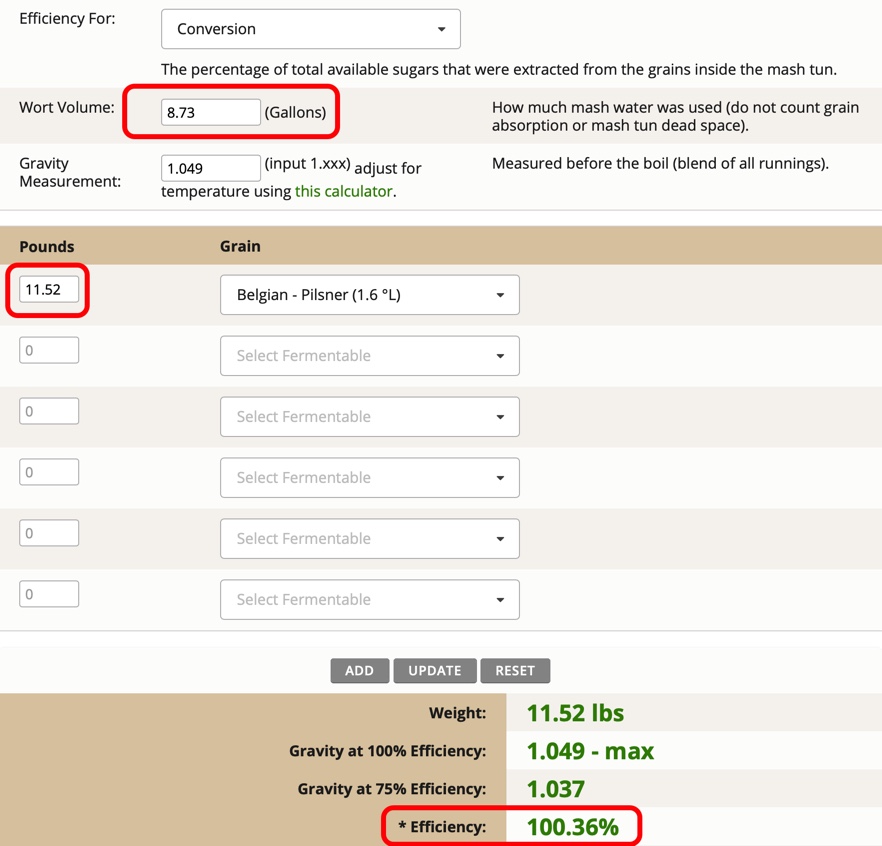
Note that we could also add the water content of the grain to the mash water, although that is a negligible amount and the resulting gravity would not have changed within the precision we are using here.
Conclusion
Conversion efficiency is simply the measure of how much extract a mash yields, compared to the maximum that can be extracted. As such it is an important concept as it directly relates to the quality of the mash. Braukaiser has a great article on efficiency where the various things that influence a good conversion are described in detail. It’s worth a read (and re-read).

